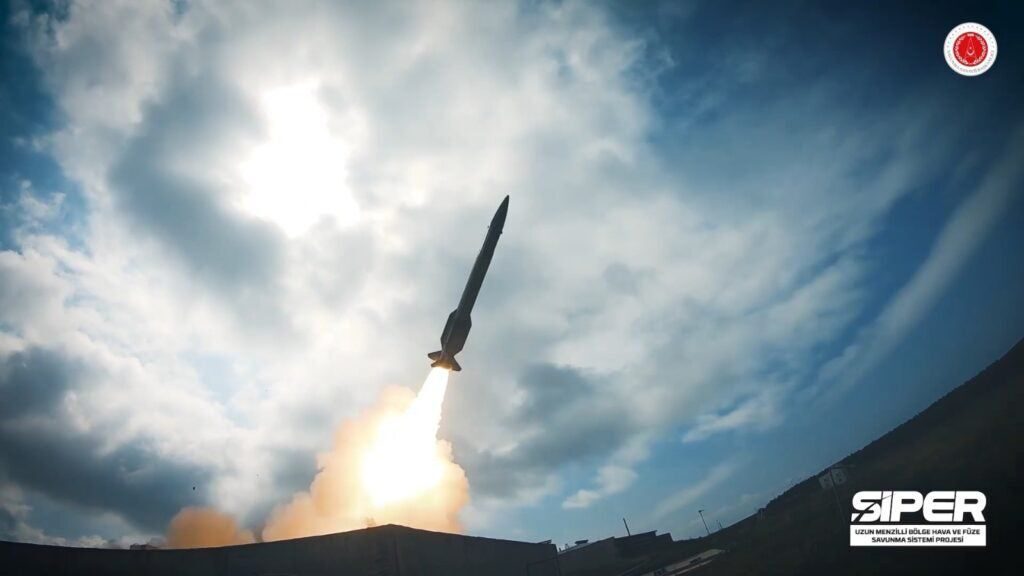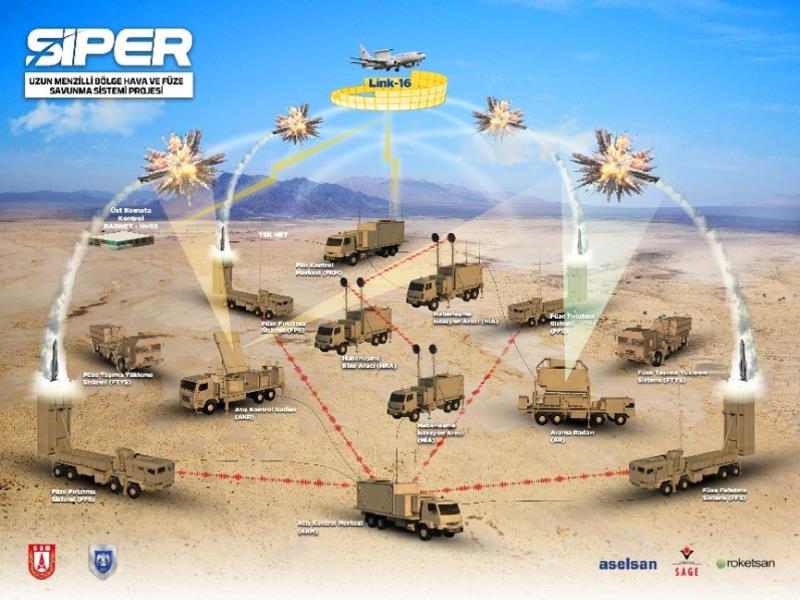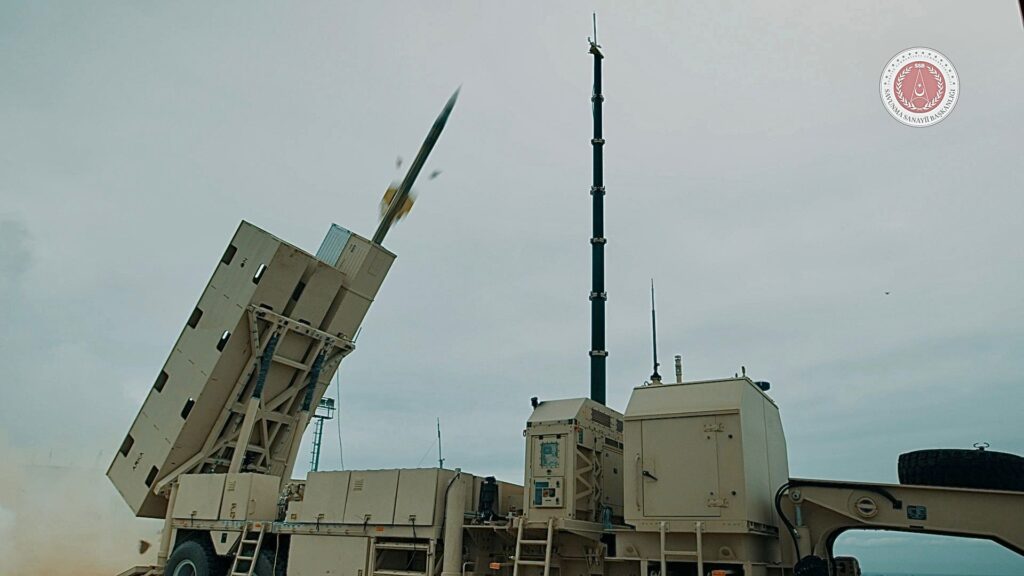Turkey Launches The Siper Block-3 Long Range Air Defense Missile Development Program
Ahmet Akyol, General Manager of Aselsan, one of Turkey’s leading defense companies, gave information about the new steps in the development process of the SİPER Long Range Area Air and Missile Defense System in an interview with Anadolu Agency (AA) during the “Global Strategies Conference in Defense and Aviation Industry”.
In his statement, Akyol informed that the SİPER air defense system will enter the service of the Turkish Air Force Command within this year and said, “Under the leadership of our state, we will have completed the end-to-end air defense layer by 2024. We’ve also completed key stages of the GÜRZ system, which we refer to as hybrid air defense. It is a system that combines numerous characteristics, including the ability to engage in multiple scenarios simultaneously, such as firing particle munitions and short-range interceptor missiles from a platform. With this understanding, I can say that it will be a year of significant developments in air defense.”
It was confirmed for the first time with this statement by Aselsan General Manager Ahmet Akyol that development on the SİPER Block-3 missile will begin. As of right now, there is no information about the capabilities of the new missile. On the other hand, the SİPER Block-2 missile, which underwent its first test in August of last year, is anticipated to go into service in 2025.

The SİPER project was launched within the scope of a contract signed in 2018 between the Defense Industries Agency and a business partnership between ASELSAN-ROKETSAN-TÜBİTAK SAGE. The project’s goal is to utilize domestic resources to meet Turkey’s demand for a High Altitude Area Air Defense Missile System, which has been needed since the 1990s. Within the terms of the contract, each company contributes to the project in line with its area of expertise. ASELSAN was tasked with developing SIPER System components such as the Fleet Control Center, Search Radar, Fire Control Center, Fire Control Radar, Communications Station Vehicle, Communications Relay Vehicle, and others. TÜBİTAK-SAGE develops the warhead for the SİPER System missiles, while Roketsan develops and manufactures their rocket engines.

The SİPER Air Defense System’s distributed architecture enables deployment near critical infrastructure, strategic facilities, and remote areas. Each SIPER Air Defense System Battery includes four vertical Missile Launching Systems, two Missile Transport Loading Systems, a Search Radar, a Fire Control Center, a Fire Control Radar, a Fleet Control Center, and three Communication Station Vehicles. The search radar, with its 360-degree coverage area, can detect aircraft, helicopters, cruise missiles, air-to-ground munitions, and unmanned aerial vehicles (UAVs) at a range of more than 200 kilometers and altitudes ranging from 0.1 to 30 kilometers. It can engage up to ten targets simultaneously thanks to the Fire Control Radar.

The SİPER Air Defense System provides multiple missile options to counter air threats. The first missile to be used will be the SIPER Block I, which has an effective range of up to 100 kilometers and an altitude over 20 kilometers. This missile is based on HİSAR-RF technology and features a double-pulse solid-fuel rocket engine and an RF warhead, similar to other HİSAR missiles. Later stages of the system will use the SİPER Block II missile, with a range of 150 kilometers, and the SİPER Block III missile, expected to have a range of over 200 kilometers.

